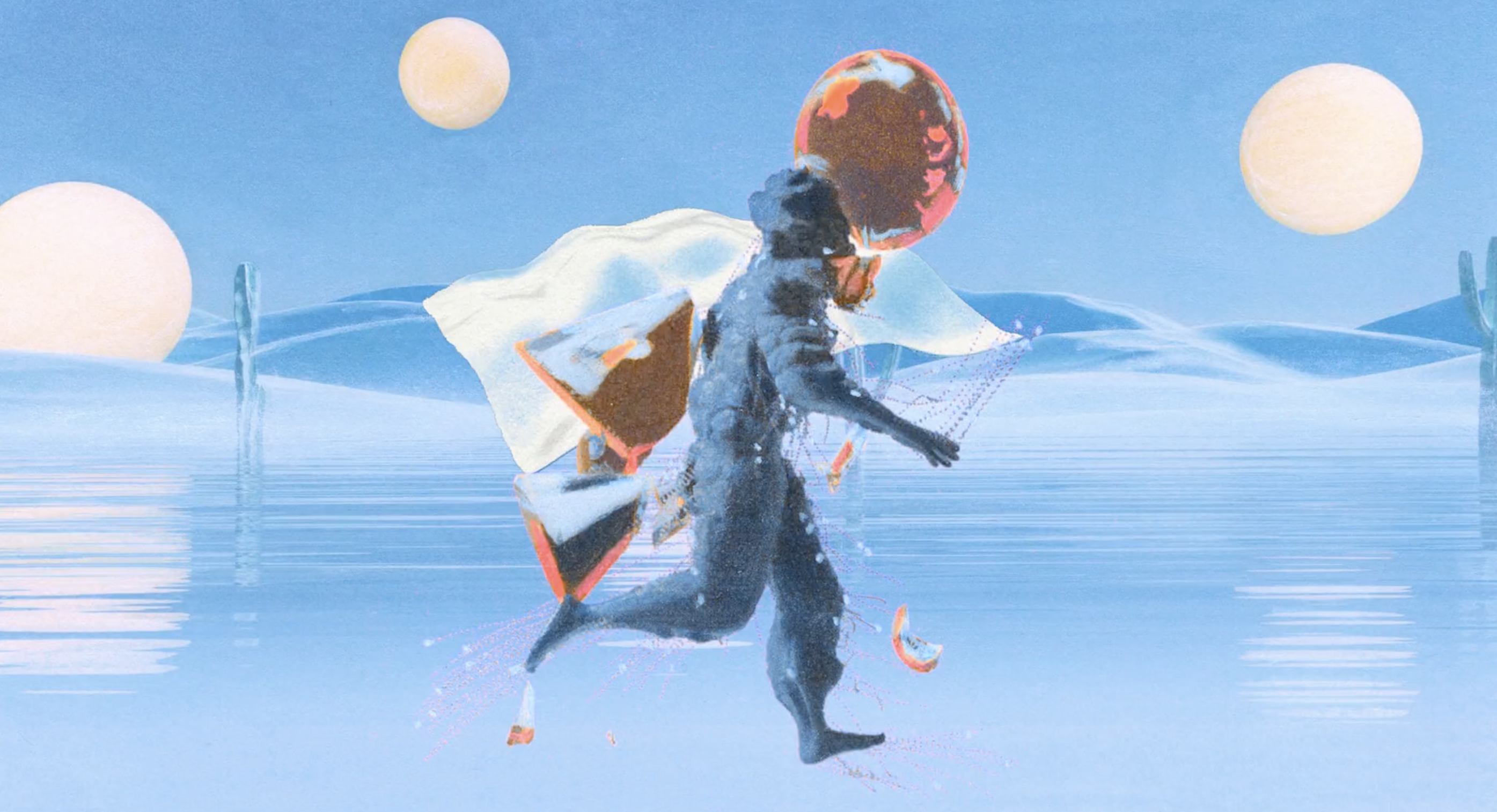With the re-release of the late Mac Miller’s sophomore album, “Watching Movies With the Sound Off,” came a never-before-heard version of the project opener, “The Star Room.” Rostrum Records teamed up with multi-disciplinary production studio Pencil TV to craft a stunning music video for the revival.
A handmade, mixed media visual project, the video illustrates the song’s themes on personal journeys, growth, and transformation using a mix of collage, gouache, paint, colour pencils, 3D art, and VFX. Pencil TV’s ingenious use of digital and non-digital elements snagged them a Lovie Award for excellence in Music Videos.
We spoke with the Founder of Pencil TV, Danaé Gosset, to find out their ten rules for creating outstanding audiovisual work. Hint: it involves immersing yourself in your references, experimenting with intention, and trusting your intuition.
What's your rule for landing on a creative and fresh idea? What does it take to think outside the box when everyone's trying to do the same?
Navigating towards innovation, I think, involves a blend of instinctual guidance and a certain commitment to authenticity. My approach is quite deeply rooted in trusting my instincts. This mindset and thinking often leads to more unique outcomes. However, I am also very influenced by external factors such as inspiration from the work of others and my surroundings/experiences. One key technique I like to incorporate into my creative strategy is the concept of Lateral Thinking, as introduced by Edward de Bono. This involves the integration of seemingly unrelated concepts or ideas, which often results in the creation of something new and fresh.
What's your rule for taking the brainstorm to an idea, then to brief? How and where does it all start?
I like to dedicate a significant amount of time to research. Whenever the project’s timeline permits, I prefer to allocate a few weeks solely to the collection of references from a wide array of sources. Subsequently, I meticulously organise these references and begin the process of integrating them into the framework of the project.
What’s your rule for aligning your idea with the audience you’re creating for? How do you meet them in the middle?
I try to prioritise the perspectives and feedback of both the audience and the client during the ideation and design phases. My approach is to maintain open lines of communication, making sure I remain adaptable throughout the process.
What's your rule for beginning to map out the project's different components—from sound and creative to tone, format and beyond?
I prioritise organising my ideas, often utilising Airtable as my organisational tool. Here, I dedicate a tab to each project aspect, gradually populating these with text, mock-ups, references, and more. This method enables me to develop a comprehensive view of my project and objectives, ensuring a holistic approach to planning and execution.
“I like to experiment, try 1000 different things and ideas, which in the end, I believe helps us all work better together, and in more unexpected ways.”
How and where does collaboration with different sectors fit into your process—either internally, externally, or both? What’s your rule for bringing different minds together on a project?
I make sure to bring different people together, and I love to have very different minds on my projects. By starting with a clear goal that everyone gets. I believe in keeping lines of communication open and respecting all points of view. I like to experiment, try 1000 different thing and ideas, which, in the end, I believe helps us all work better together and in more unexpected ways.
What's the one thing that's a must-have in your arsenal for every project?
Experimentation, organisation, and positive energy!
On the flip, what's the one thing you always try to avoid?
Conflict
Did you mess up? How did you fix it? What’s your rule for bouncing back from a misstep?
Yes, I’ve encountered (many) missteps, of course! My approach to rectifying them involves a few key steps: Acknowledging the mistake, to myself and to others. Understanding what went wrong allows me to address the issue directly, with intention. Next, I take action to correct the error.
However, I do truly believe mistakes and failures are what makes us grow the most, so my mindset is to always embrace them fully, learn, and adapt!
How do you know when to stop? And where? What’s your rule for reviewing the initial versions of a project to produce the final iteration?
I usually wrap things up by the deadline, which has always been my way of knowing it’s time to stop. I usually finish right on time, which can feel a bit rushed, but for me, the deadline is the clear signal to end the project. This approach keeps me on track and helps me move from the first draft to the final version.
What is your North Star guiding principle, mantra or philosophy for making standout work?
I think one of my main mantra is: “When there’s a will, there’s a way.”
The Final Entry Deadline for the 14th Annual Lovie Awards is Friday, 28th June!
As Europe’s most prestigious recognition for digital excellence, winning a Lovie Award means joining a community of the most exciting and inspirational companies in the region.
If you’re creating for digital, submit your work across our new categories for Film & Video, including new honours for Short Form, Long Form, Family & Kids, and Architecture, Interiors & Home. Plus, expanded honours for Best Interview or Talk Show and Best Use of AI.



